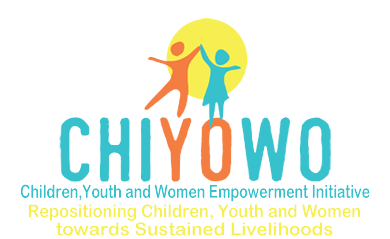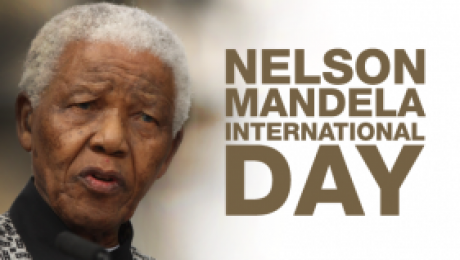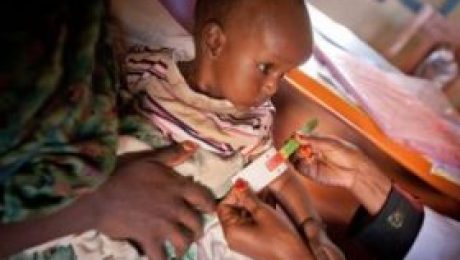Practical Ways You Can Support A Charity
Practical Ways You Can Support A Charity
Tokunbo Ifaturoti
You know the need is out there and you want to help in a meaningful way. But how? There are a variety of ways in which individuals can support charities aside from donating cash. Yes, the cash is very important and the lack of it has stalled many charities in their efforts to help.
But you may be unable to make monetary donations, are weary of how your money will be spent or just want to do something more involved than write a cheque. If so, here are some great ways to support a charity.
- Make Other Donations – Find out what materials the charity needs aside from cash. Often times you may already have it or can easily access it. If they have drop-off points then take the material to them. Requesting that they collect from you is something they may agree to but it will cost them extra to do it. Remember, for charities and their beneficiaries – every dollar counts.
- Spread the word – Tell your social media network about the charity’s deeds and its needs. Ask others to pass it along. Mention it to your neighbours, at work and at religious gatherings. Start or sign online petitions in favour of the causes of charities and charitable organizations which you support. When you think about it – your voice is the charity’s the best advertisement.
- Volunteer your time and skills – You don’t have to be particularly good at something to help get it done. Charities often need help with physical labour, mentorship programs and record keeping.
- Give Money – Helping the plight of those in need will invariably have costs attached for which only monetary donations will suffice. If you have lingering doubts then seek clarification. Ask specifically what the funds are used for. Many charities will gladly tell you because they need and respect your help.
So don’t be afraid to volunteer, the good turn you do could mean a lifetime of opportunity for someone else.
- Published in BLOG
Celebrate Youth Empowerment On World Youth Skills Day
Celebrate Youth Empowerment On World Youth Skills Day
Tokunbo Ifaturoti
The empowerment offered by skills training is embodied in the old adage: “Give a man a fish and you feed him for a day. Teach him to fish and you feed him for life.”
This is the basic ideology that seems to exist behind the United Nations (UN) adoption of World Youth Skills Day (WYSD). July 15 is designated for annual observance of the value of giving the world’s growing youth population access to training in marketable and life-changing skills.
This year marks only the second year since the day was officially added to the UN’s calendar of International Days. Since its inauguration, however, WYSD has generated a great deal of interest among person who see the need for a push in the development of skills training programmes as a way to reach and teach youth, especially in areas suffering from conflict and in poverty stricken areas.
The United Nations Educational, Scientific and Cultural Organization (UNESCO) is encouraging persons around the world to use the power of social media to spread the word about the aims, objectives, merits and activities of WYSD. You may do this in part by sharing the hashtag #WYSD.
WYSD is built around two of the Sustainable Development Goals (SDGs) for 2030, namely
- Goal 4: Quality Education – Ensure inclusive and equitable quality education and promote lifelong learning opportunities for all.
- Goal 8: Decent Work and Economic Growth – Promote sustained, inclusive and sustainable economic growth, full and productive employment and decent work for all.
“Skills development reduces poverty and better equips young people to find decent jobs. It triggers a process of empowerment and self-esteem that benefits everyone.” — UN Secretary-General, Ban Ki-moon
- Published in BLOG
Give 67 Minutes Of Your Time On Nelson Mandela International Day
Give 67 Minutes Of Your Time On Nelson Mandela International Day
Tokunbo Ifaturoti
When? – July 18, 2016, Nelson Mandela’s birthday. This will mark the 7th year of its observance, the day having been inaugurated in 2010.
Why 67? – The number represents the years Nelson Mandela spent devoting his life to public service. So in essence, you are being urged to recognize his contributions by contributing one minute of your time to the service of others to match every year he contributed.
Who can get involved? – You and those you spread the word to. The basic idea behind Nelson Mandela International Day is that everyone can make a difference through even small unheralded actions.
What can you do? – Anything and everything. From the smallest gesture to large full-scale projects. The year’s themes were announced at its official launch at the Dr Mathole Motshekga Primary School in Tembisa. They include the four key areas of
- literacy and education
- food security
- shelter and infrastructure
- the environment
That allows you a wide choice of how to plan your project to stay in keeping with the theme of the day. However, if you can’t match the theme then don’t. Just give the 67 minutes in whichever way you can.
Want to reach others? – Hashtags associated with Nelson Mandela International Day are #time2serve and #mandeladay. You can register the action you plan on taking with the Nelson Mandela Foundation and take a look at some of the other inspiring actions that persons have committed themselves to undertaking.
What to remember? – “When a man has done what he considers to be his duty to his people and his country, he can rest in peace. I believe I have made that effort and that is, therefore, why I will sleep for the eternity.” – Nelson Mandela
- Published in BLOG
A Proactive Approach To Reaching And Treating Children Suffering From Malnutrition
Needed Urgently
A Proactive Approach To Reaching And Treating Children Suffering From Malnutrition
Tokunbo Ifaturoti
The World Health Organization (WHO) provides the following key facts on child mortality.
- 9 million children under the age of 5 died in 2015.
- More than half of these early child deaths are due to conditions that could be prevented or treated with access to simple, affordable interventions.
- About 45% of all child deaths are linked to malnutrition.
- Children in sub-Saharan Africa are more than 14 times more likely to die before the age of 5 than children in developed regions.
These, surely, are alarming figures and the WHO’s subsequent statement citing “substantial global progress … in reducing child deaths since 1990” provides some comfort but does not erase the need for urgent intervention on the behalf of the world’s most vulnerable citizens.
The progress of which the WHO speaks, is a decline of approximately 53% in the number of under-5 deaths worldwide between 1990 and 2015. In real numbers, it represents 19,000 children whose lives have been saved, daily. It is reason for celebration, yes. But it is also reason for further interventions to be put in place – to save the lives of the other 16,000 children in danger of dying every single day.
Tackling malnutrition is one way to do this but there are obstacle in the way. Among these obstacles are
- conflict in regions where the children live
- limited means of transportation
- too few facilities and medical personnel that can provide the type of assistance needed
- cost to families to reach the help their children need to live
Treatment and food need to be brought to the children instead of the other way around as currently exists in many places.
Charities have the ability to do this and should be made to play a greater role in this effort. Charities integrate with communities at the ground level and have earned the trust of those they serve. Giving them the tools and resources to train and treat can literally be the difference between life and death for thousands of children.
- Published in BLOG




